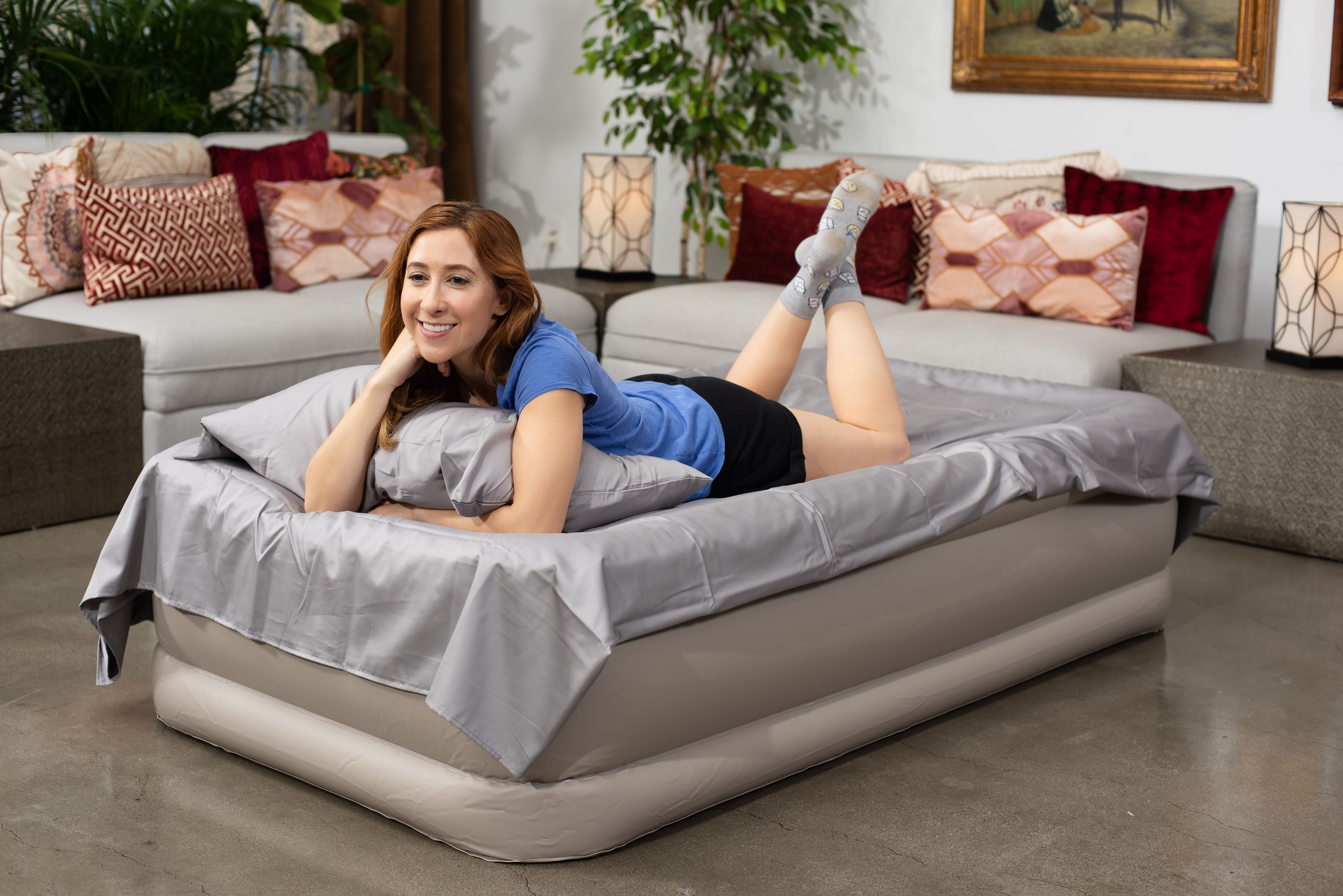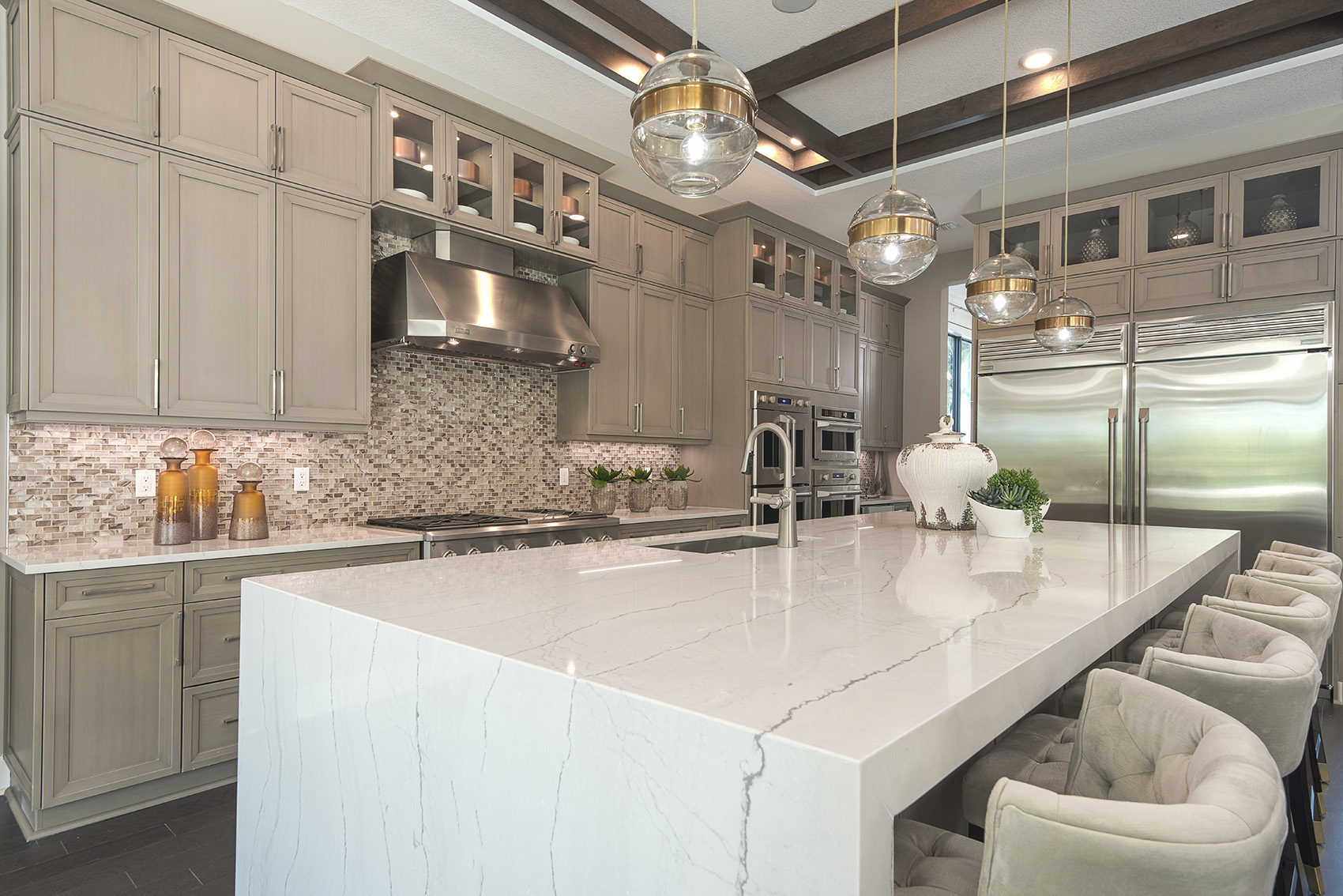Contemporary House Designs in the 90s
The 90s saw the resurgence of contemporary house design. Characterized by simple, clean lines and open layouts, contemporary house designs offer a more modern feel compared to other styles. Popular architectural features include skylights, high ceilings, and large windows to bring in the light and to highlight the views. Geometric shapes and linear patterns are common to bring energy into the space. Color is often used to brighten the home and to make it more inviting. Materials may include wood, metal, concrete, and tile - often paired with modern furnishings and accessories.
Old World Home Designs in the 90s
Old world houses were quite popular in the 90s, especially with their traditional European look. Characterized by unique details, curves, and accents, these homes often have low-pitched, steep-sloping roofs and large chimneys. Exterior walls are often made of brick or stone and color palettes normally focus on earthy tones. Symmetrical designs offer balance while large, arched windows contribute to the airy feel of the home. Accents such as wrought iron fixtures, balconies, and intricate woodwork add texture and depth and create a warm, inviting atmosphere.
Rustic House Designs in the 90s
Rustic house designs were also a popular choice in the 90s. With influences from a variety of time periods, and often referencing a simpler way of life, rustic homes often have a cozy, inviting feel. Exposed beams, rough stone, and even distressed wood may be used to bring a richness to the space and a feeling of warmth. Depending on location, homes may feature chimneys and structures made of logs or other natural elements. Furnishings normally include an eclectic mix of antiques and modern pieces, with natural materials used throughout.
Minimalist House Designs in the 90s
Minimalist house designs experienced a surge in popularity during the 90s. Characterized by simple forms, clean lines, and a subtle yet distinctive charm, minimalist homes emphasize functionality and maintain a calm, tranquil atmosphere. Materials typically used are steel, concrete, brick, and simple wood finishes. Unusual shapes may also be used to add visual interest to the space. Colors may be neutral, but accents of brighter colors may be included to liven up the home. Minimalist homes often offer more space consciousness and efficient use of space, making them ideal for urban living.
Modern House Designs in the 90s
Modern house designs in the 90s drew inspiration from a variety of design elements, but with a focus on simple forms and emphasis on functionality. Natural materials such as wood, brick, and stone may be used to create an inviting atmosphere. Windows tend to be larger and allow for lots of natural light while outdoor living spaces may also be included. Colors are typically muted, with accents being added in to liven up the space - warm tones such as yellow, red, and orange being popular. Furnishings feature low-profile silhouettes and natural materials, with minimal ornamentation.
Mediterranean House Designs in the 90s
The 90s also saw a surge in Mediterranean house design. Often characterized by white-washed walls, distinctive archways, and earthy colors, these homes invoke a feeling of relaxation and warmth. Red-tiled roofs, muted blue and yellow hues, and ornate ironwork serve to bring an exotic look to the space. Interior walls may be plain, but often feature unique designs such as frescoes or stenciling. Furnishings often have an antique feel, while handcrafted accessories bring an additional layer of texture to the space.
Victorian House Designs in the 90s
Victorian house designs were another popular choice in the 90s. Characterized by steeply pitched roofs, intricate accents, and a variety of materials, these homes often feature vibrant colors and exaggerated details. Shapes tend to be asymmetrical while wrap-around porches and balconies add to the charm. Windows tend to be large and have various styles, with stained-glass details often used as well. Materials used can range from wood to brick, with slate, shingle, and copper roofs being popular. Turrets, towers, and other ornamentation further add to the impressiveness of the home.
Colonial House Designs in the 90s
Colonial house designs in the 90s were heavily inspired by historic architecture and featured symmetrical verandas, with multiple stories and gabled windows. Exterior walls may be made of brick or stone, while intricate woodwork and elaborate shutters add to the home's traditional look. Color palettes tend to feature pastels or soft white, with green often the accent color. Also, wainscoting, crown molding, and other classic details can be seen in colonial homes. Traditional furniture and colonial-inspired accessories round out the look.
Craftsman House Designs in the 90s
The 90s saw a resurgence in Craftsman house designs. Characterized by features such as exposed rafters, rustic beams, and earthy materials, Craftsman homes tend to exude a feeling of warmth and coziness. Porches and wrap-around decks bring added appeal to the exterior while natural stone can often be seen on the walls and chimneys. Windows tend to be bowed, with stained glass and wooden finishes prevalent. Details such as patterned railings, boxy earthquakes, and shingle or shingles roofs further add to the home's rustic feel.
Farmhouse House Designs in the 90s
Farmhouse house designs in the 90s emphasized functionality while also creating a sense of comfort and warmth. These homes often feature a wrap-around porch, providing an ideal spot for outdoor gatherings and relaxation. Brick or wood is often used for the walls, with a combination of clapboard and shingles on the roofing. Exterior details such as intricate woodwork, window boxes, and lattice may also be included. Inside, furnishings and fabrics tend to be homey and comfortable, with a nod to a simpler way of living.
Tudor House Designs in the 90s
The 90s also saw a resurgence in Tudor house designs. Characterized by steeply pitched roofs and distinctive half-timbering, Tudor homes often feature intricate details such as stone or brick patterns. Large windows allow for plenty of light, while colorful accents bring life to the space. Exposed beams, arched doorways, and textured walls create an inviting atmosphere. Dark colors such as green and red may be used in combination with warm tones like yellow and gold. The interior often features picture rails, fireplaces, and wood flooring, further adding to the richness of the home.
The Popularity of 90s House Design
 The 90s house design became wildly popular due to the influential success of interior designers and home décor magazines. With an overall aesthetic that combined minimalism, complex textures, and natural elements, the look was both modern and timeless. The incorporation of natural elements, such as a brick fireplace, wood floors, and even thick curtains, made the space warm and inviting.
Bright colors, such as olive green and pale yellow, created an ambience that was both striking and complementary. The furniture often featured either bold colors and geometric patterns which stood out in a room, or a muted tone that blended in harmoniously with the overall design. Accessories further accentuated the style with classic and contemporary pieces alike.
The appeal of
90s house design
is renowned for its ability to combine many elements and merge them together seamlessly. It was the perfect mixture of nostalgia and modernity. As many people experienced the personalization of their homes in the 90s, the trend still lives on today, offering unique décor ideas for the modern home.
The 90s house design became wildly popular due to the influential success of interior designers and home décor magazines. With an overall aesthetic that combined minimalism, complex textures, and natural elements, the look was both modern and timeless. The incorporation of natural elements, such as a brick fireplace, wood floors, and even thick curtains, made the space warm and inviting.
Bright colors, such as olive green and pale yellow, created an ambience that was both striking and complementary. The furniture often featured either bold colors and geometric patterns which stood out in a room, or a muted tone that blended in harmoniously with the overall design. Accessories further accentuated the style with classic and contemporary pieces alike.
The appeal of
90s house design
is renowned for its ability to combine many elements and merge them together seamlessly. It was the perfect mixture of nostalgia and modernity. As many people experienced the personalization of their homes in the 90s, the trend still lives on today, offering unique décor ideas for the modern home.
Scandinavian Influences
 The Scandinavian influences of modern minimalism were apparent in 90s house design. In its most basic format, it included white, creams, and grays as a neutral backdrop for the furniture. Finding the perfect balance between minimalism and texture often took a great deal of trial and error.
The Scandinavian influences of modern minimalism were apparent in 90s house design. In its most basic format, it included white, creams, and grays as a neutral backdrop for the furniture. Finding the perfect balance between minimalism and texture often took a great deal of trial and error.
Geometric Patterns
 The use of geometric patterns was one of the hallmarks that set the 90s house design apart from its predecessors. This translated to everything from rugs to pillows, or even art pieces along the walls. Brave patterns combined with an aerodynamic simplicity created an ideal combination for the modern living space.
The use of geometric patterns was one of the hallmarks that set the 90s house design apart from its predecessors. This translated to everything from rugs to pillows, or even art pieces along the walls. Brave patterns combined with an aerodynamic simplicity created an ideal combination for the modern living space.
Earthy Elements
 The introduction of
earthy elements
made for an organic and calming experience. Natural materials like wood and plants were used to infuse a sense of tranquility into the room. This gave homeowners a chance to incorporate elements that resembled nature indoors, adding warmth while remaining perfectly suited for the era.
The introduction of
earthy elements
made for an organic and calming experience. Natural materials like wood and plants were used to infuse a sense of tranquility into the room. This gave homeowners a chance to incorporate elements that resembled nature indoors, adding warmth while remaining perfectly suited for the era.
Conclusion
 The 90s presented a unique opportunity for homeowners to express themselves through their home décor. By combining minimalism, texture, and natural elements in such an effortless fashion, the 90s house design stands amongst some of the most iconic eras in décor history.
The 90s presented a unique opportunity for homeowners to express themselves through their home décor. By combining minimalism, texture, and natural elements in such an effortless fashion, the 90s house design stands amongst some of the most iconic eras in décor history.



























































































































